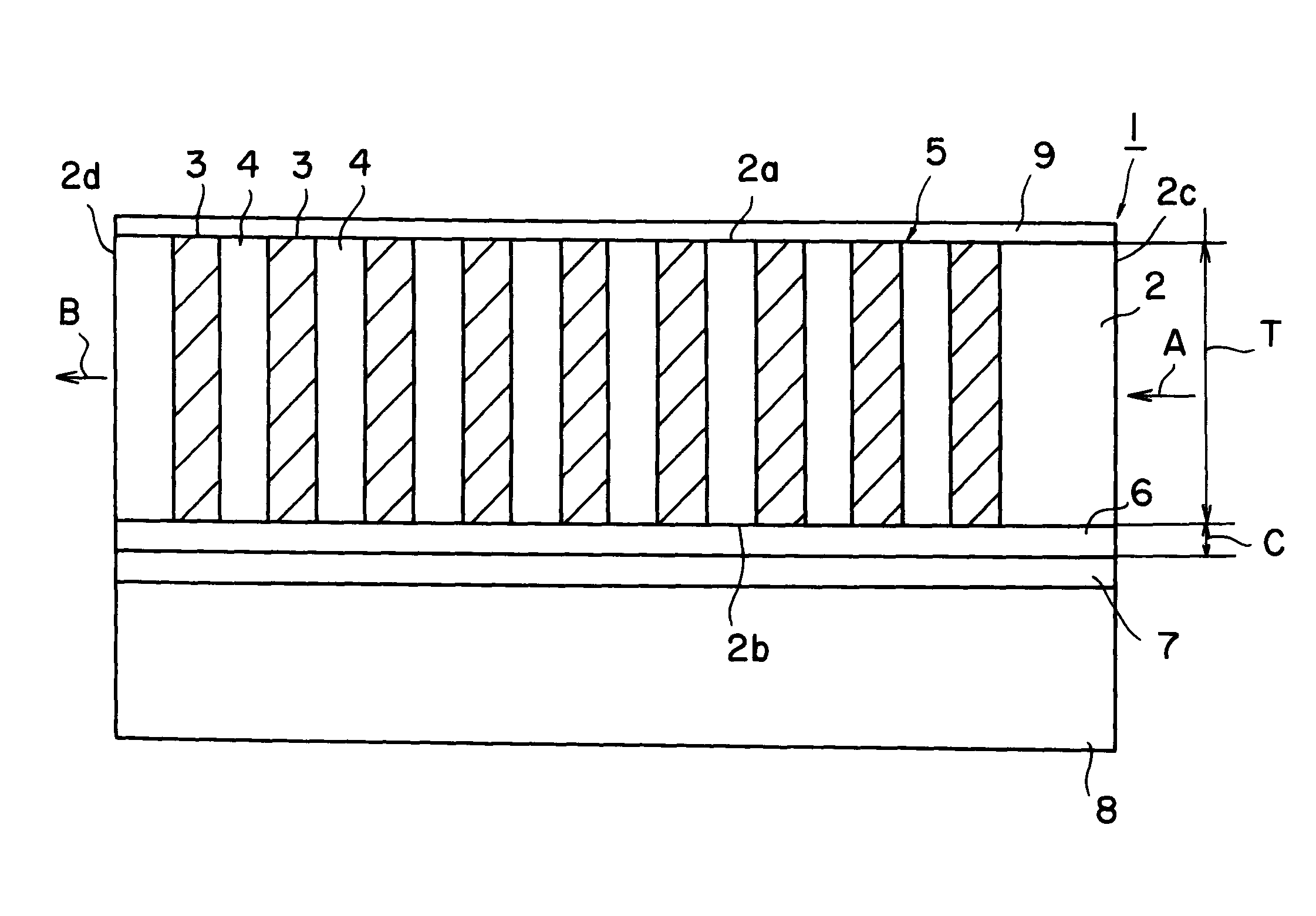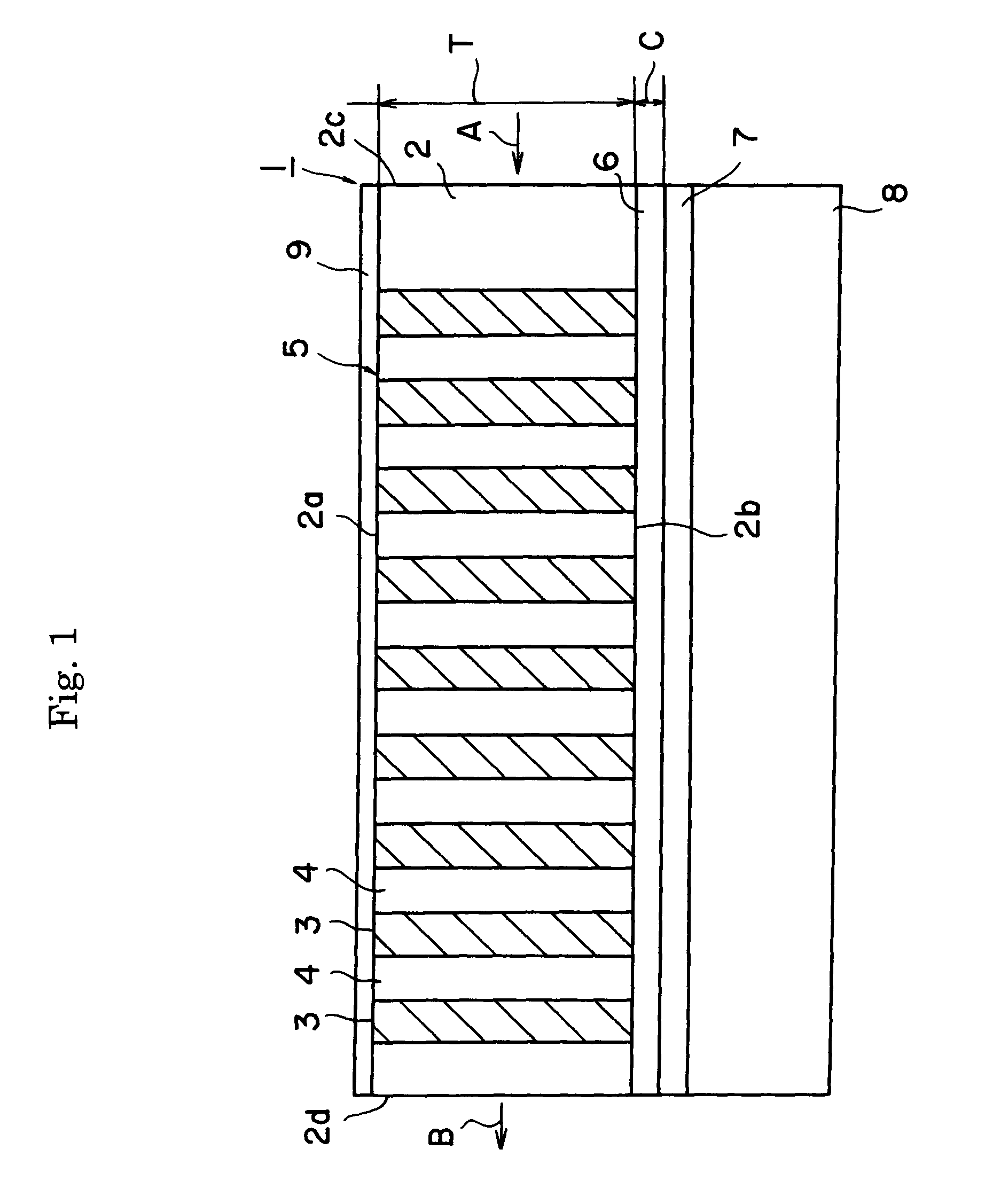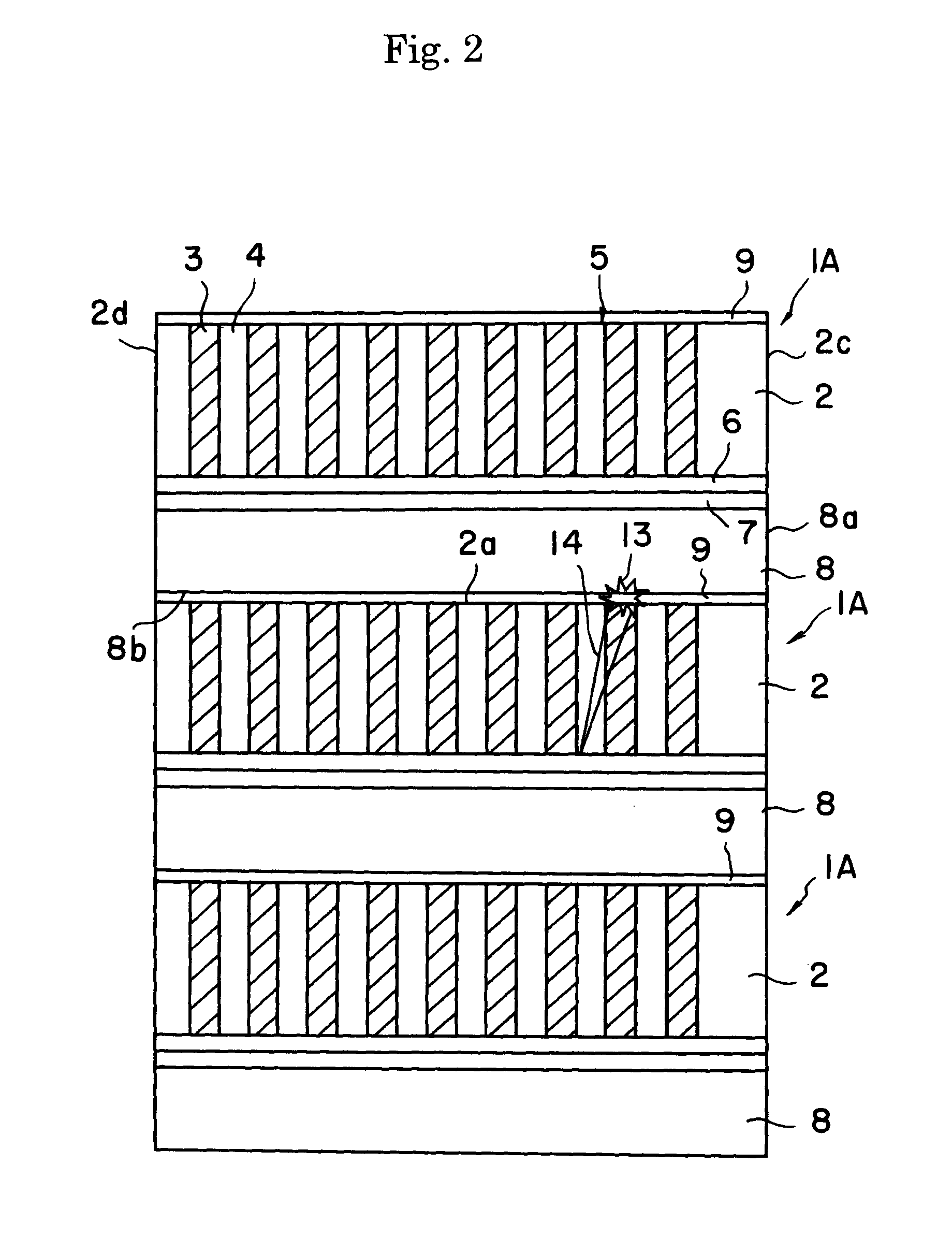Wavelength conversion devices and a method of producing the same
a technology of wavelength conversion substrate and waveguide, which is applied in the direction of paper/cardboard containers, instruments, containers, etc., can solve the problems of abnormal discharge between the upper face and micro cracks in the region of the optical waveguide of the wavelength conversion substra
- Summary
- Abstract
- Description
- Claims
- Application Information
AI Technical Summary
Benefits of technology
Problems solved by technology
Method used
Image
Examples
example 1
[0065]The second harmonic wave oscillating device illustrated in FIG. 1 was produced.
[0066]Specifically, a comb-shaped periodic electrode with a period of 7.0 μm was formed on an MgO 5% doped lithium niobate Z substrate of 0.5 mm thick by photolithography. The substrate has a volume resistivity of 5×1013 Ω·cm. An electrode membrane was formed over the entire surface of the back face of the substrate. A pulse voltage was then applied on the electrodes to form the periodic domain polarization inversion structure 5. An SiO2 under clad (buffer layer) 6 of a thickness of 0.6 μm was formed thereon by sputtering.
[0067]An adhesive was applied on a Z-cut low resistance lithium niobate substrate 8 of a thickness of 0.5 mm, which was then adhered to the above MgO-doped lithium niobate substrate. The substrate 8 had a volume resistivity of 5×1010 Ω·cm. The thickness of the adhesive was 0.4 μm. The surface of the MgO-doped lithium niobate substrate was ground and polished to a thickness of 45 μm...
example 2
[0070]The second harmonic wave oscillating device 1 was produced according to the same procedure as the Example 1, and its end face was polished. However, the material of the supporting body 8 was a low resistance lithium niobate single crystal having a volume resistivity of 4×1011 Ω·cm.
[0071]Nd-YAG laser was used in the optical waveguide to measure the optical characteristics of the chip. That is, the oscillation power of the laser was adjusted at 2 W to provide a fundamental light, which was incident into the slab optical waveguide through a lens. The fundamental light was scanned over a width of 3 mm and the distribution of the resulting SHG output was measured. It was thus proved that an SHG output power of 10 mW or more was observed over the whole scanned region.
example 3
[0075]The second harmonic wave oscillating device 11 illustrated in FIG. 3 was produced.
[0076]Specifically, a comb-shaped periodic electrode with a period of 7.0 μm was formed on an MgO 5% doped lithium niobate Z substrate of 0.5 mm thick by photolithography. The substrate has a volume resistivity of 5×1013 Ω·cm. An electrode membrane was formed over the entire surface of the back face of the substrate. A pulse voltage was then applied on the electrodes to form a periodic domain polarization inversion structure 5. An SiO2 under clad (buffer layer) 6 of a thickness of 0.6 μm was formed thereon by sputtering.
[0077]An adhesive was applied on a lithium niobate substrate 8 of a thickness of 0.5 mm, which was then adhered to the above MgO-doped lithium niobate substrate. The substrate 8 had a volume resistivity of 1×1014 Ω·cm. The thickness of the adhesive was 0.4 μm. The surface of the MgO-doped lithium niobate substrate was ground and polished to a thickness of 45 μm. An optical wavegui...
PUM
| Property | Measurement | Unit |
|---|---|---|
| thickness | aaaaa | aaaaa |
| thickness | aaaaa | aaaaa |
| thickness | aaaaa | aaaaa |
Abstract
Description
Claims
Application Information
 Login to View More
Login to View More - R&D
- Intellectual Property
- Life Sciences
- Materials
- Tech Scout
- Unparalleled Data Quality
- Higher Quality Content
- 60% Fewer Hallucinations
Browse by: Latest US Patents, China's latest patents, Technical Efficacy Thesaurus, Application Domain, Technology Topic, Popular Technical Reports.
© 2025 PatSnap. All rights reserved.Legal|Privacy policy|Modern Slavery Act Transparency Statement|Sitemap|About US| Contact US: help@patsnap.com



